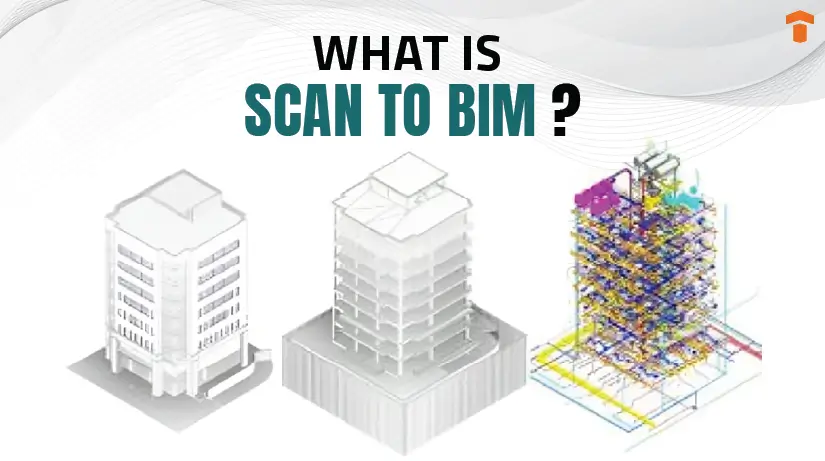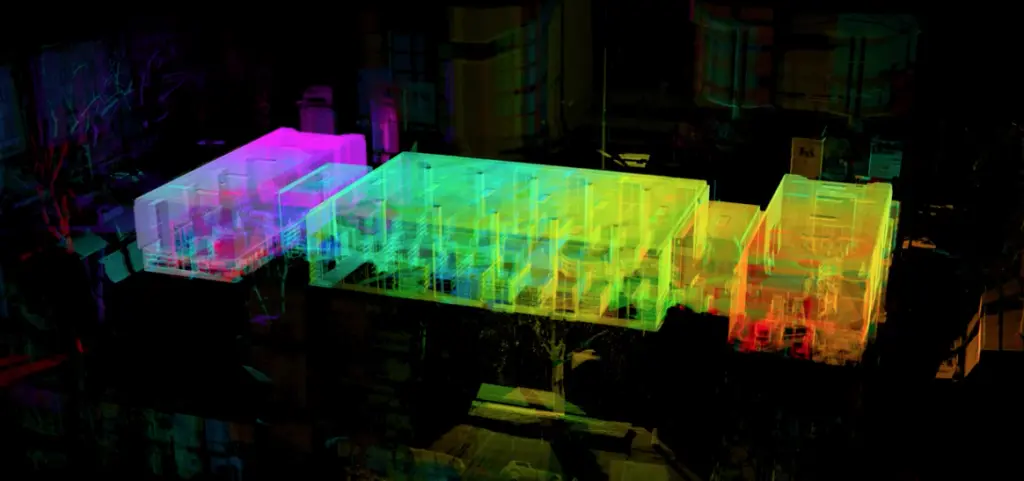Understanding the Scan to BIM process
Mar 20, 2024
Category: Software & Tools
Admin

The way of understanding how buildings need to be developed is changing rapidly. This is due to the immediate need for sustainability and structural improvements. Technology in itself has made a significant impact on the entire process of design development and construction.
Through BIM, engineers, architects, and contractors find it easy to collaborate better on the design and its implementation. At this juncture, the concept of Scan to BIM gains prominence mostly because this feature will contribute to collecting important information to create accurate 3D simulations.
What is Scan to BIM?
Scan to BIM is best defined as a process where a space is captured and then transformed into a digital model to aid in creating a BIM model. It is used to digitally capture a particular area on-site through the help of a 3D laser scanner, which is further used to run simulations and develop a model.
The scanning method to BIM allows for rapidly capturing important data that plays an essential role in design development. It translates the data into point cloud digital models further integrated into BIM platforms. Through the collection of this information, it becomes easier to maintain visual accuracy and granular spatial awareness.
Scan to BIM Process
1) Laser Scanning

Considered an essential part of capturing data, it allows for quick and accurate capturing of as-built site data. Laser Scanning also collects three-dimensional imagery, helping to make accurate design simulations. The process utilizes the combined controlled steering of Laser beams and a laser rangefinder. This helps maintain the accuracy of the physical characteristics of the existing object.
2) Point Cloud Processing
In the case of Point Cloud Processing, there are millions of data points prevalent that are mostly derived through laser scans. In this way, it becomes easier to capture the real-world conditions and coordinates of the structures in real-time. The data presented has improved accuracy which improves design development.
How does the process of Scan to BIM work?
The scan workflow to BIM starts with laser scanning, where the intended area is scanned, and data is collected. This scanner can be easily attached to any aerial drone or be affixed to a stationary tripod. The role of the scanner is to record correspondence from point to point so that the entire geometry of the site can be recorded.
The immediate result is a huge amount of data. The laser scanner makes it possible to accurately predict and measure the location of each point. This is done by sending out a light beam and then measuring the distance that it takes from bouncing back and then returning.
The benefits of using the Scan to BIM process
It is evident that quite a few benefits are present with using the Scan to BIM process. Considering its ability to collect innumerable data from every access point, it is a valuable tool in creating models during construction. The section below mentions a few major advantages associated with it.
Speed: The method can scan over 100,000 square feet of space every single day. Furthermore, once the specific point cloud is captured, this can be easily processed and transformed through cloud computing within hours.
Improved accuracy: the Scan to BIM process offers accurate and minute details, which is possible because of its tolerance level of a single millimeter or less. Furthermore, with the embedded metadata in it, the measurement accuracy is improved, making it easier to rack up designs.
Preserving History: One of the most important uses associated with Scan to BIM is its contribution to the preservation of historical infrastructures. In such projects, the accuracy of points is an essential component to further improve blueprints of old historic buildings. This improves the preservation process.
Cost and Time Savings: There are a lot of cost and time benefits associated with the Scan to BIM process which makes it a valuable tool for architects. It helps in avoiding expensive redesigns and reworks and reduces miscommunication between the workers.
| Read More: What is Bexel Manager? Software Explained, Importance and Uses
Conclusion
Hence, with increasing demand in the current industry for using BIM to improve the semantics of developing buildings, Scan to BIM is quickly becoming an important tool. This process makes it easier to capture a space digitally and collect data from various access points easily. This improves the ability of architects to create, develop, and maintain BIM models for a long period.
About TechnoStruct Academy:
TechnoStruct Academy is the educational arm of TechnoStruct, LLC, a registered design engineering firm based in California. It offers specialized BIM training programs for architecture, MEP, and BIM Management.
Our BIM Certification Courses:
BIM-Ready+: Become a BIM Management professional specialized in managing all ASMEPF projects working with open BIM and interoperability with a credible BIM Manager Certification.
BIM-Ready Complete: Become a BIM Engineer specialized in all ASMEPF (Architectural, Structural, Mechanical, Electrical, Plumbing, and Fire Protection) disciplines working with open BIM and interoperability.
BIM-Ready (Arch+Structure): Specialize in BIM Fundamentals, Conceptual Design, Sustainable Design, Design Development, and Construction Documentation in the BIM Environment with this BIM Architect Course.
BIM-Ready (MEP): Become an MEP BIM Engineer specializing in BIM Fundamentals, HVAC, Electrical, Plumbing and Fire Fighting, Design, and Modeling in a BIM Environment.
Bexel Manager Certification Program: This program teaches you about BEXEL Manager, a software that brings together key 3D, 4D, 5D, and BIM features, making it quick and easy to embrace BIM processes and technology for speedy project implementation.
FAQs
What is BIM?
What are the major benefits of using BIM?
Can BIM be utilized for small projects?








